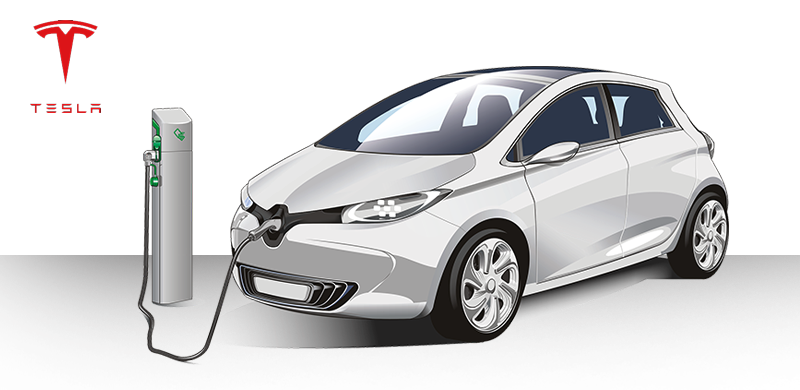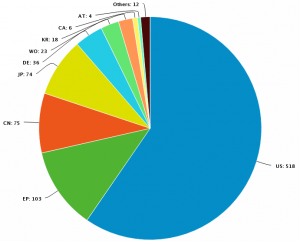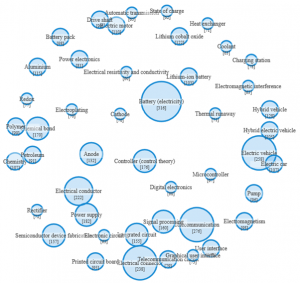
Tesla created ripples in the EV market in 2006 with the introduction of the Roadster – a plug-in electric sports car, powered by Li-ion batteries. Since then, the company and its CEO, Elon Musk, have always been in the news.
Some years back, Tesla made it to the headlines for open-sourcing its patents. In 2014, Elon Musk announced that Tesla would not initiate lawsuits against other EV manufacturers, if they chose to utilize its technology. He recently reiterated his belief that a technological advancement by Tesla in accelerating the Electric Vehicle revolution should be open for others to learn from. He shared a reminder of the blog post he wrote in 2014, “Tesla will not initiate patent lawsuits against anyone who, in good faith, wants to use our technology”.
Tesla owns a patent portfolio of around 870 active patents covering a broad range of technologies related to electric vehicles, batteries and thermal management systems. The above patents do not include the patent portfolio of SolarCity Corporation, the solar energy services company it acquired in 2016.
We take a closer look at Tesla’s auto-related patent assets in our report.
The SolarCity Acquisition
The SolarCity acquisition enabled Tesla to expand its revenue streams beyond the automotive sector. Tesla’s energy generation and storage business has grown in recent years. This business segment includes solar roof tiles and energy-storing solar panels – the Powerwall for residential use and Powerpack for commercial use. Tesla is ramping up production of the solar roof tiles and the energy-storing Powerwall battery by offering panels for around $1.75 to $1.99 per watt, lower than the U.S. national average of $2.85 per watt.
Going forward, Tesla plans to focus on the solar energy business in addition to the automotive sector. Tesla’s acquisition of SolarCity reaffirmed the company’s vision of building an ‘integrated sustainable energy company’ which provides solutions for ‘energy production, storage, consumption and transportation’.
General Trends
The growth in Tesla’s patenting activity began around 2007-2008, shortly after the company launched the Roadster. The continued upward trend in Tesla’s published applications resumed in 2015, as seen in figure 1. In 2018, Tesla obtained 177 published applications.
Figure 2 shows that the U.S. is the preferred filing destination for Tesla, accounting for more than half of its active published applications. The other significant jurisdictions where Tesla has sought patent coverage include the European Patent Office, China and Japan.
Technology Trends
Tesla is known for its disruptive innovations and relentless pursuit of clean energy solutions. In the automobile industry, the company has popularized electric vehicles (EV) through its innovative designs. Tesla has also entered into partnerships with large automotive incumbents such as Toyota, Mercedes and Daimler to expand the EV market.
Figure 3 is a Topic Map of the top technologies (based on key concepts) covered by Tesla’s portfolio. In the figure, the size of a bubble corresponds to the total number of patent applications for a technology category. The bubble proximity corresponds to the similarity or “relatedness” of the individual technology categories.
As expected, some of the key technologies include those related to batteries, electric vehicles, hybrid EVs, signal processing, EV control and safety, driver interactions for EVs and end-user applications in transport.
The company boasts of a strong patent portfolio related to emission reduction, charging, depolarising batteries and supplying loads from batteries, EV charging and safety devices on electrically-propelled vehicles. Many of the patents covering these technologies have an average Relecura Star rating of 3 or above. Typically, a patent with a Relecura Star rating of 3 or more is deemed as one of high-quality. The Relecura Star rating ranks each patent on a scale of five. It is a proprietary composite metric incorporating multiple criteria. The metric combines different technology, business, and litigation related factors. The report lists the top sub-technologies covered by the high-quality patents.
The detailed report also includes a competitor analysis for Tesla. Tesla’s automotive patent assets are compared against the large incumbent auto companies like BMW, Volkswagen, Hyundai-Kia Motors, Renault-Nissan-Mitsubishi, and its Chinese competitors – BYD, BAIC, SAIC, Geely and Chery. The competitor study shows the comparison for the key technology categories for the above-mentioned companies.












